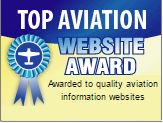 |
|
Aviation accident statistics developed in Canada by the Canadian Transportation Safety Board (TSB) and in the United States by the National Transportation Safety Board (NTSB) show we have a typical “good news/bad news” situation. The “good news” is that, since the end of WWII, both the accident rate and the fatal accident rate have steadily fallen. The “bad news” is that we still have accidents, both fatal and non-fatal. According to Transport Canada, the current rate of aviation accidents in Canada is about 13 per 100,000 hours flown. Fewer than 2 fatal accidents occur per 100,000 hours flown (1). Pilot error was found to be a “broad cause/factor” in 84% of all accidents and 96% of fatal accidents. Modern aircraft maintained to modern standards are quite reliable. The most difficult part of the equation to work with continues to be, as they used to say, the “nut that holds the steering wheel.” Accident statistics indicate that ‘descent, approach, and landing’ is the most dangerous phase of flight followed by ‘take-off and climb.’ While descent, approach, and landing accounts for only 24% of exposure time, it results in 61% of all accidents. Cruise flight accounts for 60% of total exposure time, but results in only 17% of accidents (2). When pilot workload is high as on approach and landing, accident rates increase. Approach also occurs at the end of a flight when a pilot is most fatigued. High workload coupled with greater fatigue level…. you do the math. No big surprises here. Work with pilot statistics shows a number of identifiable patterns (3). The pilots most likely to have an accident:
The most dangerous times in any pilot’s career seem to occur at two, specific points:
The key common factors appear to be that pilots’ confidence at these critical times exceeds their experience level. Pilots may unknowingly put themselves in situations that are beyond their capabilities; they have not developed the necessary experience to recognize the level of danger involved. Many weather-related accidents fall into this category. Another pattern to be aware of is that, in the normal course of events, as pilots increase their exposure to risk, they are more likely to encounter dangerous situations. During flight training, pilot candidates fly under the watchful eye of instructors and within a tightly regulated regimen. Their judgement is monitored and direction and feedback are always available. The likelihood of setting out into marginal weather or into a situation beyond their abilities is very limited. Immediately following flight training, typically, pilots with a new license will be very conscious of their developing skill levels and lack of experience and will regulate their decisions based on that sense of inexperience. They are likely to seek help and advice from more experienced pilots. As pilots gain experience, they will begin to develop a sense of confidence and will begin to venture further and further into new situations. This is a very positive trend and, if done within reasonable limits, leads to pilots acquiring the needed experience to become good aviators. We all know that experience is a product of time on task. You cannot gain experience from any source other than doing the job. Knowledge and sometimes insight can be passed along from one person to another, but experience is only gained by each person through the process of doing. Confidence and experience develop separately and at their own rates. The most vulnerable moments are when our confidence level has developed faster than our experience and we “feel” more capable than we actually are. Of course, experienced pilots have accidents, too. Sometimes very experienced pilots have accidents. None of us is immune to making mistakes, experiencing lapses in judgement or misinterpreting events or perceptions. And rarely, machines do fail. Our biggest enemy is always that moment of overconfidence when we allow our judgement to overrule our real ability and experience. When we certify and turn a new pilot loose on the world, it is our judgement and our hope that he or she has acquired an adequate base level of knowledge, skill, and understanding to safely operate an aircraft as Pilot-In-Command. As we keep saying, the license in an entry point. It is a “license to learn”. All of us who fly would like to avoid being part of the sad statistics on aviation accidents. One of the best practices we can develop to help ensure we fly safely is to be very honest with ourselves regarding our abilities: our knowledge, skills, and attitudes. Yes, do be confident about what you know and can do, but keep in mind as well that confidence must be based on real abilities earned through experience and the development of knowledge and skills. These are won only through time on task, safe attitudes, and an honest appreciation of our own limitations. End Notes 1. Transport Canada, Human Factors for Aviation, Basic Handbook Transport Canada, pg. 3 2. ibid, pg. 5 3. ibid, pg. 5 |



